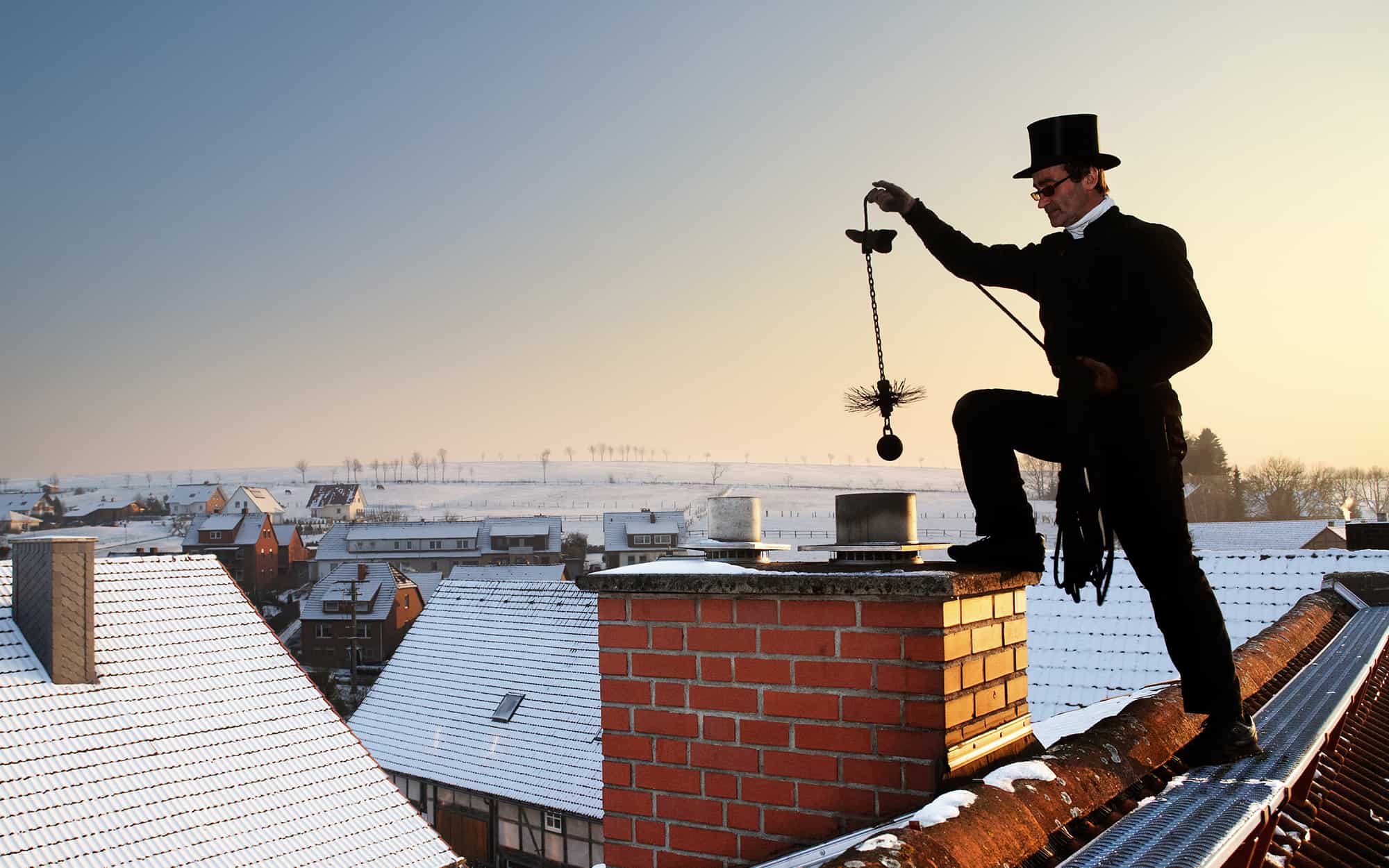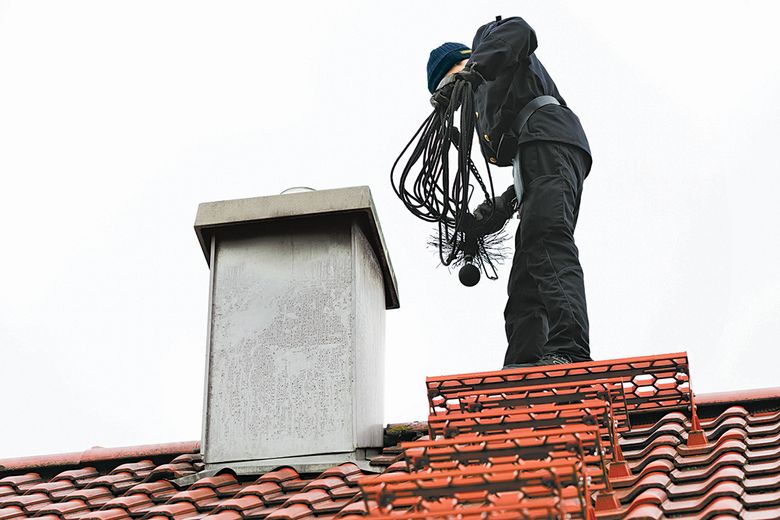Chimney Cleansing: A Step-by-Step Overview to Keeping a Healthy Fireplace
Maintaining a healthy and balanced fire place is crucial for the safety and efficiency of your home. Routine chimney cleaning is an important part of this maintenance regimen. In this step-by-step overview, we will give you with detailed guidelines on how to effectively clean your smokeshaft, ensuring that it functions optimally and lowers the risk of fire threats. By following these guidelines, you will certainly learn how to gather the required tools, do an aesthetic examination, clear particles and build-up, sweep the smokeshaft, and finish the last actions for continuous maintenance. With a specialist method and interest to detail, you can confidently deal with your fireplace and enjoy its heat and comfort for several years ahead.
Collecting the Necessary Tools
To start the procedure of smokeshaft cleaning, the very first step is to gather all the essential tools. Having the right devices at hand ensures a effective and secure cleaning process. The essential devices for chimney cleaning include a chimney brush, a ladder, ground cloth or plastic sheets, a flashlight, handwear covers, and a dirt mask.
The chimney brush is the key device used to get rid of soot and creosote buildup from the flue. It is very important to choose a brush that matches the shapes and size of your smokeshaft. In addition, a tough ladder is required to access the chimney safely. Make certain the ladder is steady and put on a flat surface area.
Ground cloth or plastic sheets are important for protecting the surrounding location from dirt and debris. They help make and include the mess cleanup less complicated. A flashlight is essential for inspecting the chimney's interior for any type of indicators of damage or obstructions. Gloves are needed to shield your hands from residue and other unsafe compounds, while a dust mask helps avoid the inhalation of particles.
Performing a Visual Examination

Using a flashlight, carefully check out the indoor wall surfaces of the smokeshaft for any signs of damages, such as splits, loosened blocks, or mortar wear and tear. These issues can endanger the chimney's structural honesty and position a serious security hazard. In addition, check for any kind of indications of water damage, such as discoloration or efflorescence, as this can indicate a leaking smokeshaft cap or blinking.
Following, inspect the chimney flue for any kind of blockages. Try to find the presence of nesting materials, leaves, or particles that may have gathered gradually (Chimney Sweep San Jose). These blockages can limit air movement, enhance the threat of carbon monoxide gas buildup, and impede the chimney's ability to efficiently vent smoke
Throughout the visual evaluation, pay close attention to the chimney crown, which is the top surface that protects the chimney from dampness. Try to find splits or missing out on pieces in the crown, as these can allow water to get in the chimney and cause substantial damages.
Cleaning Debris and Build-up
After finishing the visual inspection, the following action in chimney cleansing involves cleaning particles and build-up to guarantee the appropriate functioning of the fireplace. Over time, particles such as fallen leaves, twigs, and pet nests can accumulate in the chimney, obstructing the circulation of air and triggering prospective fire dangers.
To clear review particles and build-up, it is essential to make use of the right devices and methods. A chimney brush, specifically developed for this function, is made use of to remove loose debris and creosote from the chimney walls. It is vital to choose a brush that matches the dimension of your smokeshaft to make sure efficient cleansing. Prior to beginning the cleaning procedure, make certain to cover the fireplace opening to avoid particles from falling under the room.
To start, insert the brush right into the chimney and move it up and down, scrubbing the walls to remove any kind of particles or creosote. Use a sweeping activity to make certain extensive cleaning. It is recommended to begin with all-time low and function your way up. As soon as the cleaning is complete, utilize a vacuum cleaner or a smokeshaft brush expansion to advice remove the dislodged particles from the fireplace.

Sweeping the Smokeshaft
The sweeping of the chimney is a critical step in keeping a healthy and balanced fireplace. Over time, residue, creosote, and various other debris can gather in the smokeshaft, blocking the flow of air and possibly causing a dangerous accumulation of flammable materials. Normal chimney brushing up not only guarantees correct ventilation yet likewise prevents the threat of smokeshaft fires.
When it comes to smokeshaft sweeping, it is extremely recommended to hire a specialist smokeshaft move. These specialists have the knowledge and tools necessary to safely and successfully remove the gathered debris from your chimney.
It is necessary to note that the regularity of smokeshaft sweeping depends on a number of factors, such as the sort of fuel used, the amount of use, and the kind of smokeshaft. As a general regulation of thumb, it is advised to have your chimney examined and brushed up at least yearly.
Final Actions and Upkeep
After finishing the chimney sweeping procedure, the very first action in the final maintenance is to evaluate the chimney cap and trigger arrestor. These components prevent particles, animals, and rainwater from getting in the chimney.

Check the within of the fireplace for any indications of degeneration, such as splits, loose bricks, or damaged mortar. These problems can impact the structural integrity and safety and security of the fireplace. Get in touch with an expert smokeshaft move or mason to address them quickly. if any kind of troubles are discovered.
Finally, take into consideration mounting carbon monoxide gas detectors near the fire place and throughout your home. These devices can detect the existence of this dangerous gas, offering a very early caution system in instance of a smokeshaft malfunction. On a regular basis inspect and replace the batteries in these detectors to ensure their performance.
Conclusion
In final thought, adhering to a step-by-step guide for chimney cleansing is crucial in maintaining a healthy and balanced fireplace. By collecting the necessary devices, performing an aesthetic examination, getting rid of particles and accumulation, and sweeping the smokeshaft, home owners can ensure the this link safety and efficiency of their fire place.
The essential devices for chimney cleaning consist of a chimney brush, a ladder, decline cloths or plastic sheets, a flashlight, handwear covers, and a dust mask.
A smokeshaft brush, specifically designed for this objective, is used to remove loosened debris and creosote from the smokeshaft walls. Normal smokeshaft brushing up not only guarantees correct air flow however additionally prevents the danger of chimney fires.
When it comes to smokeshaft sweeping, it is highly advised to hire a specialist smokeshaft sweep. After finishing the smokeshaft sweeping procedure, the first action in the final upkeep is to inspect the chimney cap and trigger arrestor.